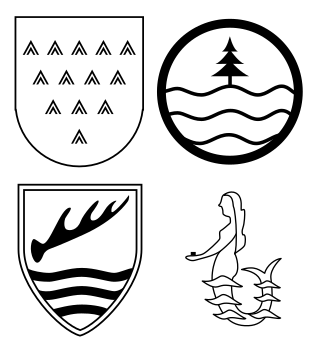The German 206th Infantry Division, was a military unit that served during World War II. Like most German infantry units it had no motorization, and relied on leg and horse mobility.

The 208th Infantry Division, or 208.Infanterie-Division in German, was a large military unit that served during World War II. Like most German infantry divisions, the bulk of its troops were foot-mobile infantry supported by horse-drawn artillery.

The 352nd Infantry Division was an infantry division of the German Army during World War II. Deployed on the Western Front, the division defended Omaha Beach on D-Day, 6 June 1944. In late 1944, the division was reassembled as the 352nd Volksgrenadier Division.

The 22nd Infantry Division, which soon became the 22nd Air Landing Division, was a specialized German infantry division in World War II. Its primary method of transportation was gliders. The division played a significant role in the development of modern day air assault operations. Towards the end of the war, the formation was reshaped into the 22nd Volksgrenadier Division.

The 60th Infantry Division was formed in late 1939, from Gruppe Eberhardt, a collection of SA units that had been engaged in the capture of Danzig during the Invasion of Poland. This division was unusual in that its manpower was largely drawn from the SA and the police.

The 334th Infantry Division was a German Army infantry division in World War II. Originally formed in November 1942, it surrendered to the Allies at the conclusion of the Tunisian Campaign in May 1943. The division was reconstituted on 3 June 1943 in France within the 1st Army, with the staff of the 80th Infantry Division as well as remnants of the old division and replacement units. It spent the remainder of the war serving on the Italian Front.

The 716th Static Infantry Division was a World War II, German Army infantry division. It was raised on May 2, 1941, and sent to German-occupied France in June 1941. Many of the division's troops were elderly Germans and conscripts from other German-occupied countries. The division also had some young German conscripts as well. As a bodenständig it was not equipped with the standard configuration of vehicles and heavy weapons. Much of the division's artillery and anti-tank guns were from captured armaments.

The 91st Air Landing Division was a German Army infantry division in World War II.

The 243rd Static Infantry Division was an infantry division of the German Army raised in July 1943. It was stationed in the Cotentin Peninsula when the Allies invaded in June 1944.

The 26th Infantry Division was a pre-World War II German Infantry Division of the 1st mobilisation wave. It was mobilised for World War II on September 26, 1939, disbanded on September 10, 1944, near Radom and reformed as the 26th Volksgrenadier Division on September 17, 1944, near Poznań by absorption of the new 582nd Volksgrenadier Division of the 32nd mobilisation wave. Remnants of the Division entered U.S. captivity in the Harz region in 1945.

The 305th Infantry Division was a German Army unit that saw extensive, front-line action during World War II. This division was present at the Battle of Stalingrad, the Battle of Monte Cassino, and surrendered to U.S. Army's 88th Infantry Division in Northern Italy near Trento in late April 1945.

The 32nd Infantry Division of the German Army was mobilized on 1 August 1939 for the upcoming invasion of Poland. At that time, it consisted of the usual German Infantry Division elements: three infantry regiments of three battalions each, one three-battalion regiment of light artillery, one battalion of heavy artillery, a Panzerjäger (anti-tank) Battalion, a reconnaissance (Aufklärungs) Battalion, a Signals Battalion, a Pioneer (Engineer) Battalion, and divisional supply, medical, and administrative units.

The 162nd Turkistan Division was a military division that was formed by the German Army during the Second World War. It drew its men from prisoners of war who came from the Caucasus and from Turkic lands further east.

The 319th Static Infantry Division was a German Army static division during World War II. It was raised in November 1940 from units of the 87th, 169th and the 299th Infantry Divisions. On 30 April 1941 the 319th Division replaced the 216th Infantry Division in the Channel Islands defense and remained in that position until its capture in May 1945 by British forces.

The 15th Infantry Division was an infantry division of the German Army during the interwar period and World War II, active from 1934 to 1945.

The 389th Infantry Division was a German division of the Wehrmacht in the Second World War, which fought for example in the Battle of Stalingrad. It was formed on 27 January 1942 in Milowitz.
The 708th Infantry Division was a German Army infantry division in World War II.

The 81st Infantry Division was an infantry division of the German Army during World War II. It was active from 1939 until 1945 and served primarily on the Eastern Front.
The 134th Infantry Division was a German division in World War II. It was formed in October 1940.
The 416th Infantry Division was a German infantry division of World War II.
















